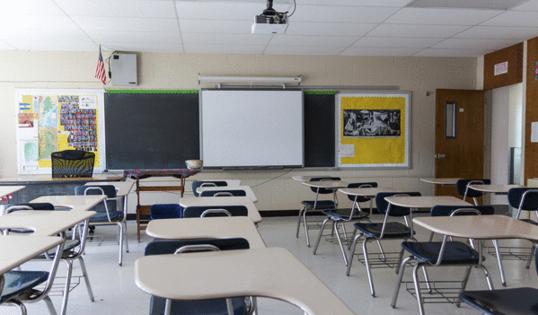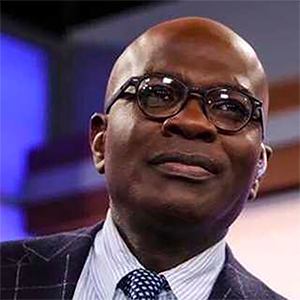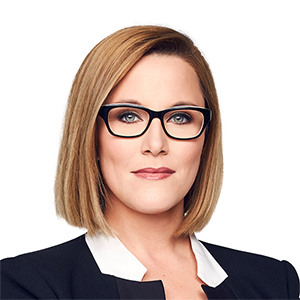Abby McCloskey: Vouchers aren't enough to fix US schools
Published in Op Eds
It’s the end of another school year. Is it the end of American public schools?
Some in Texas think so, following the recent passage of a statewide voucher program. Starting in the 2026-2027 school year, parents will be able to use vouchers to offset tuition costs at participating private schools.
Despite the dire predictions of critics, who accuse the programs of draining taxpayer money from public schools, research shows that the programs deliver on their promises. At the same time, after decades of advocacy from conservatives, perhaps it’s time to admit that they are no educational elixir. More is needed on questions of funding and curriculum, especially these days, given how far American students have fallen behind.
In a comprehensive review of the academic literature, voucher programs correlate to higher standardized test scores and lower rates of absenteeism and suspension — including, perhaps surprisingly, for the students who remain in public schools. A 2020 NBER study of private vouchers in Florida found particularly sizable benefits for students from comparatively lower socioeconomic backgrounds in the public schools facing the highest levels of competition. Similarly, a 2024 NBER paper found that the creation of charter schools increased reading scores and attendance rates of students who remained in the traditional public school system.
But cultivating more school options is not the end-all-be-all. As of 2019, 25 states had voucher programs of some type in place, but only 2% of K-12 students are in private school with public vouchers. Only 7% of public school students are in charter schools.
The reality is that most kids end up staying in the public schools they are zoned for a variety of reasons: some private schools don’t take vouchers and some charters are oversubscribed or on the other side of town. School choice is particularly ineffective in rural environments, and vouchers can hurt outcomes when parents perhaps inadvertently choose lower performing private schools, as a recent AEA study showed.
Worse, school choice can become an excuse for policymakers to skirt hard and immediately needed conversations about an ineffective public-school curriculum, classrooms that have morphed into screen zombies, or unaccountable teacher and student performance.
Here, there’s much work to do.
Indeed, the most meteoric change in student achievement this last decade wasn’t from vouchers. It was from a statewide investment in the basics.
Since 2013, Mississippi has gone from one of the worst elementary school literacy rates in the country to above average from investing in third grade reading. That included better training for teachers, using a phonics-based curriculum and hiring reading coaches.
These investments have been paired with steep accountability: if kids are not literate, they repeat third grade. Instead of falling behind, those kids were further ahead academically by 6th grade for having gotten the basics right.
We need more of this, shoring up the foundation. Instead, our education system functions the other way around. Higher education arguably commands too much — roughly a third — of the government’s cumulative spending on education. This makes little sense considering that the majority of kids cannot read or write at grade level by the time they hit double-digits.
The Trump Administration is exploring tweaking this ratio, floating the idea of diverting money from Harvard to trade schools. But taking resources from top-tier research institutions seems ill-advised. (Might I suggest the colleges that churn out dropouts instead?)
And if anything, the investment is needed much earlier than trade or vocational school during high school. Consider that in 2025, only 1 in 3 students are able to read or write proficiently in fourth grade, according to the most recent Nation’s Report Card. Among students who are poor enough to qualify for free lunch, less than 1 in 5 are proficient. By 8th grade, a third of all students are unable to identify basic elements in a text, such as the order of events or the main idea.
A third of all 8th graders qualify as “proficient” in math. It’s down to 1 in 8 if you’re eligible for free lunch. In 8th grade, being “proficient” means understanding the difference between parallel and perpendicular lines, for example. This isn’t just the pandemic’s lingering scars; the decline in student learning — especially for our most vulnerable kids — was happening long before.
The way we are educating our children isn’t working. A generation of kids unable to do basic math and reading bodes poorly for our nation and economy, irrespective of what happens with the rest of public policy.
More school choice helps, but we should also be committed to getting the basics right — regardless of where kids end up.
Half of American adults — the largest share this century — are “very dissatisfied” with the quality of public education in the nation, according to Gallup. One quarter of kids no longer feel the need to attend school: According to one estimate by the American Enterprise Institute, 25% of students were considered chronically absent in 2022-23, up from 13% in 2019-2020.
Those who fear vouchers are the end of public school should look again. Based on student scores in 2025, public education is already flailing. The question is what we will do to fix it.
_____
This column reflects the personal views of the author and does not necessarily reflect the opinion of the editorial board or Bloomberg LP and its owners.
Abby McCloskey is a columnist, podcast host, and consultant. She directed domestic policy on two presidential campaigns and was director of economic policy at the American Enterprise Institute.
_____
©2025 Bloomberg L.P. Visit bloomberg.com/opinion. Distributed by Tribune Content Agency, LLC.

























































Comments